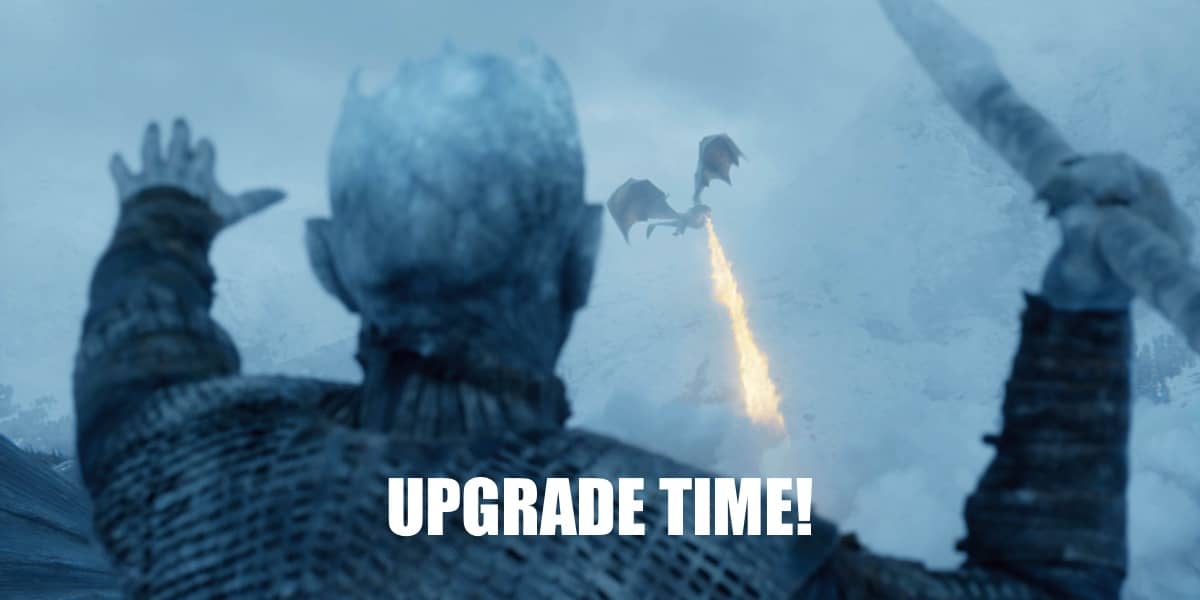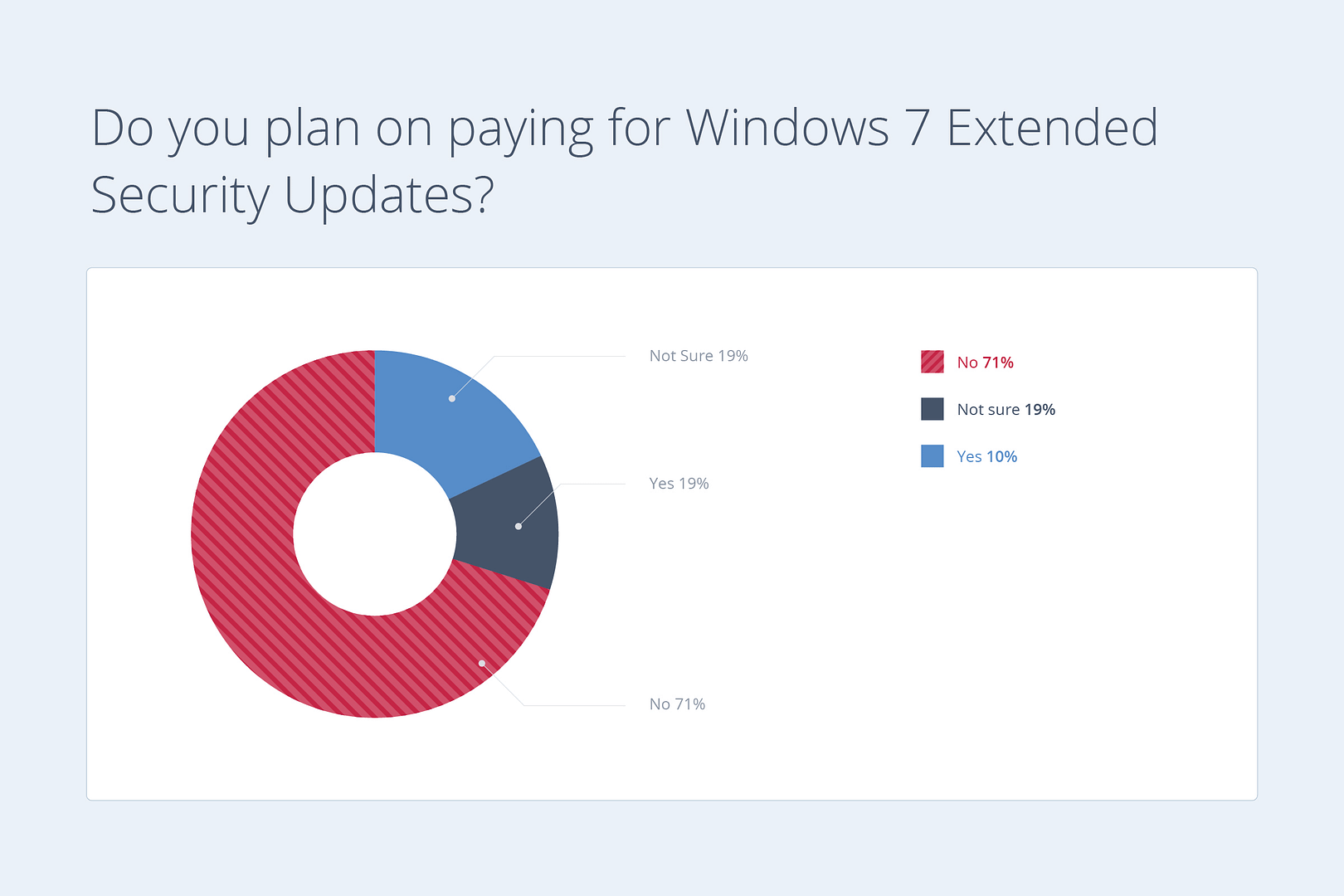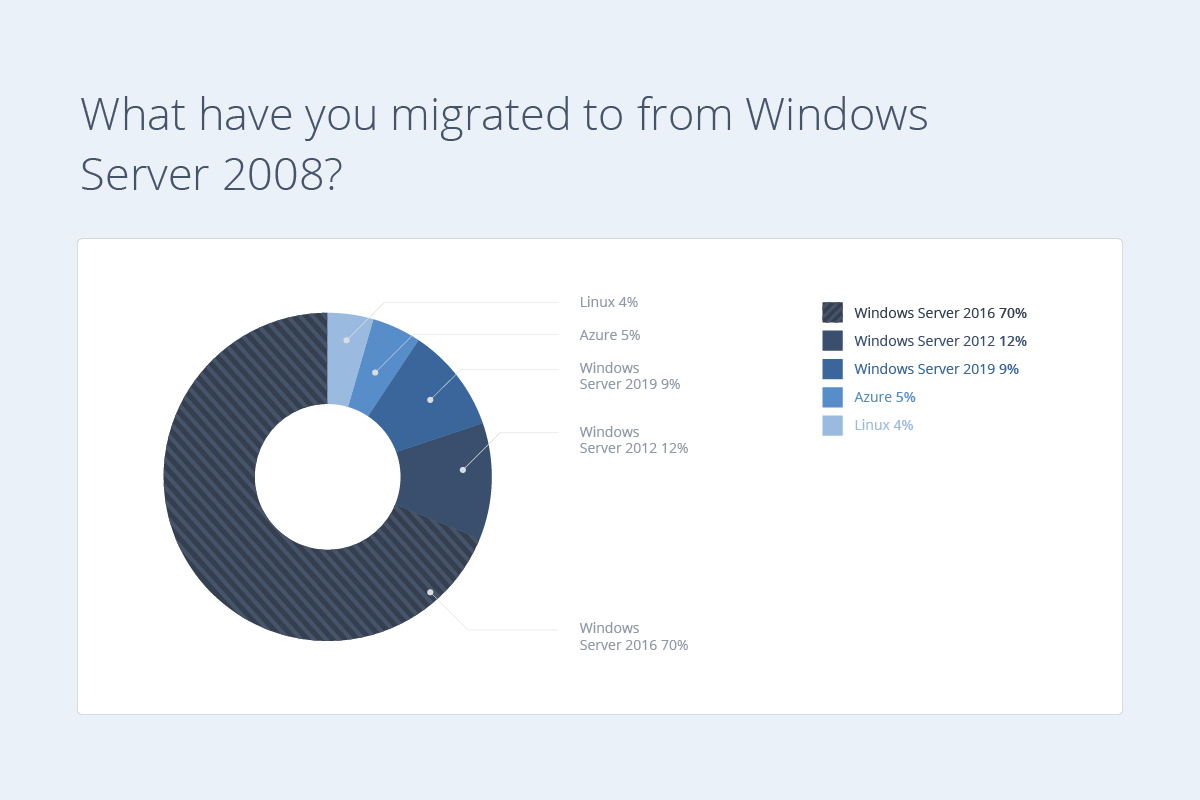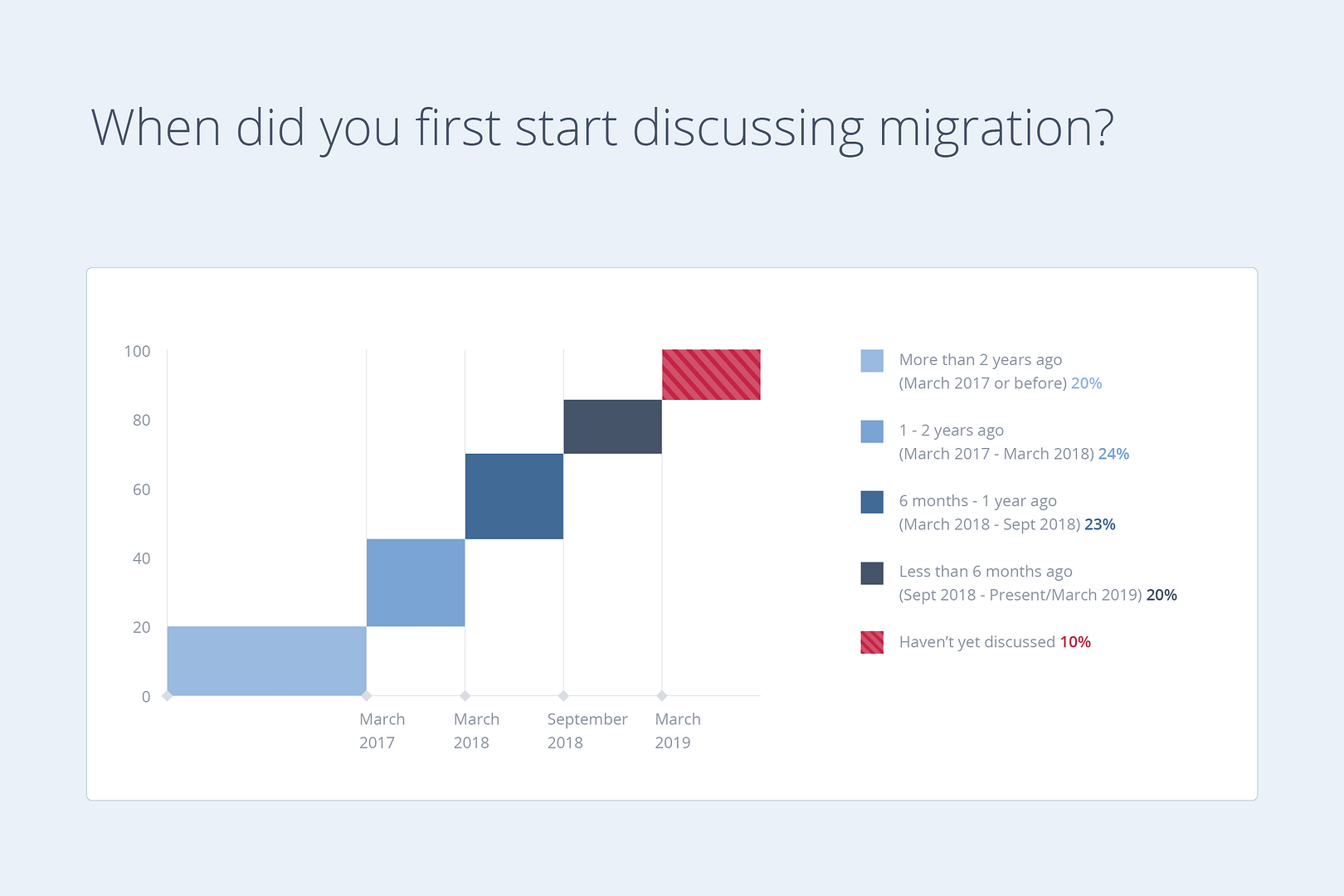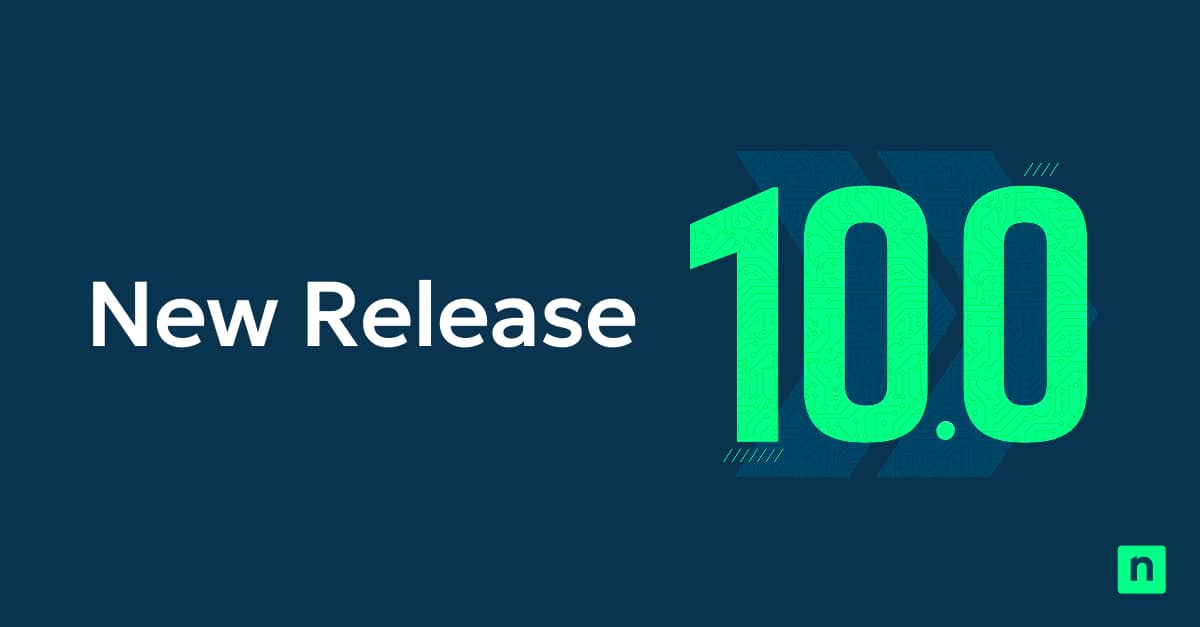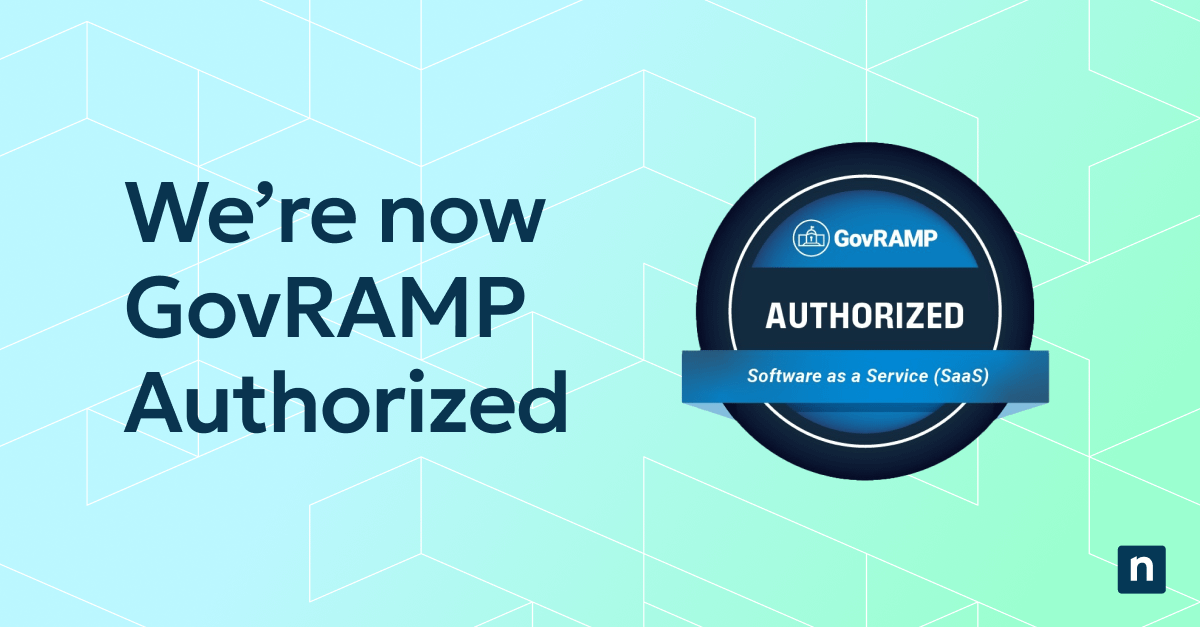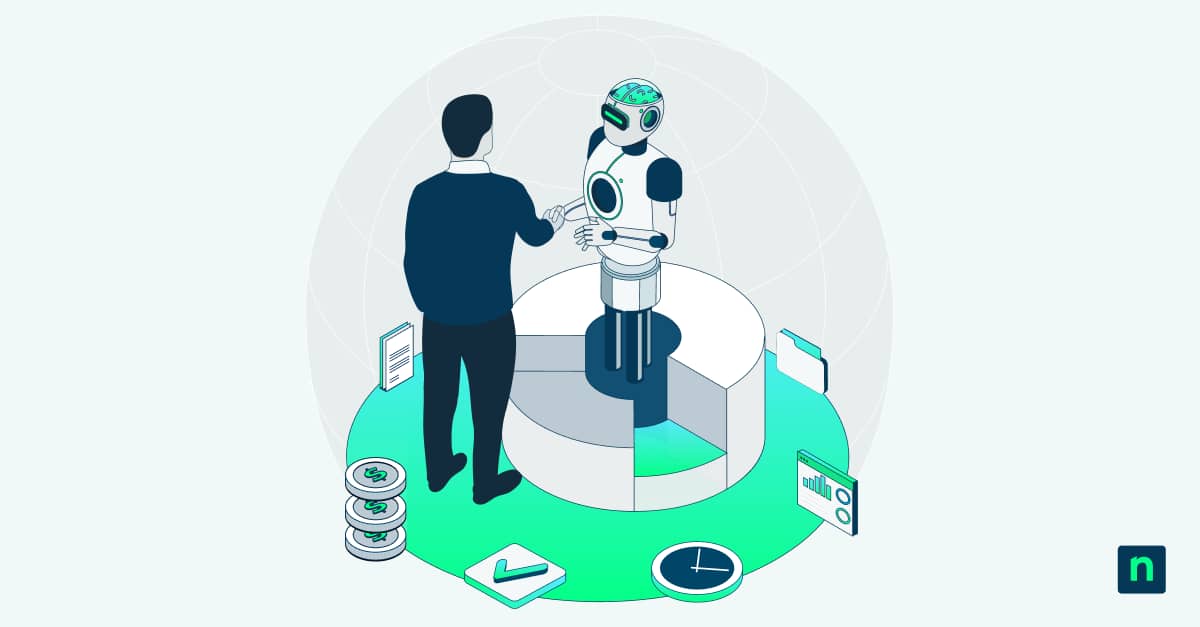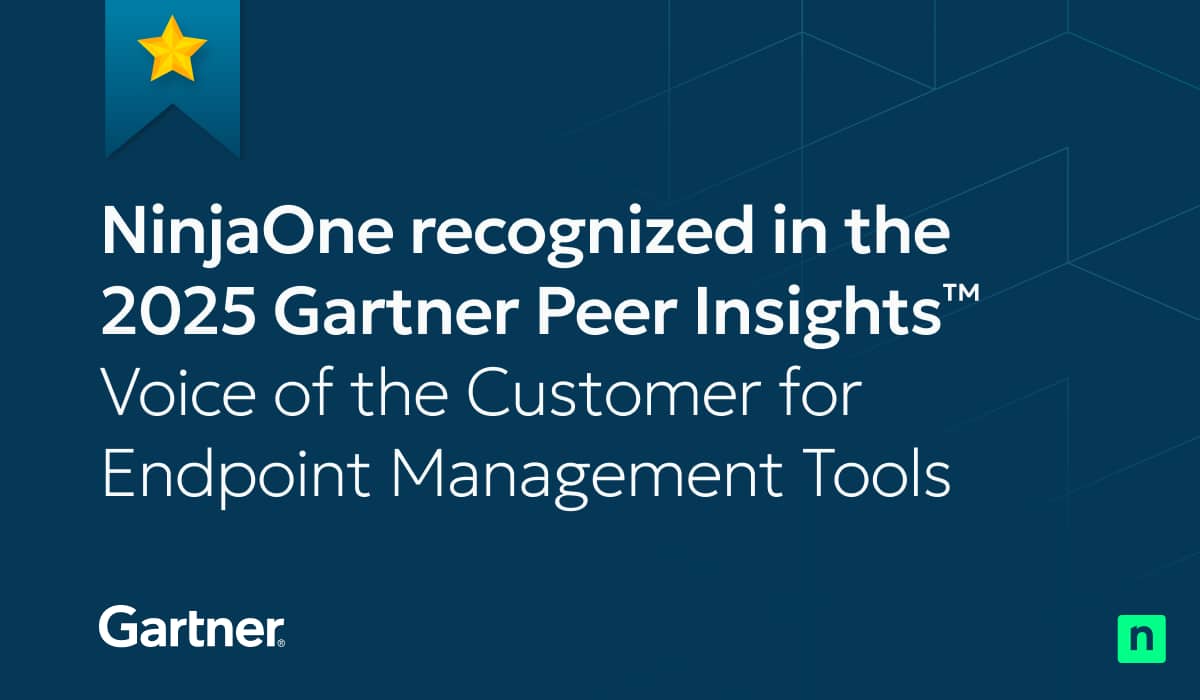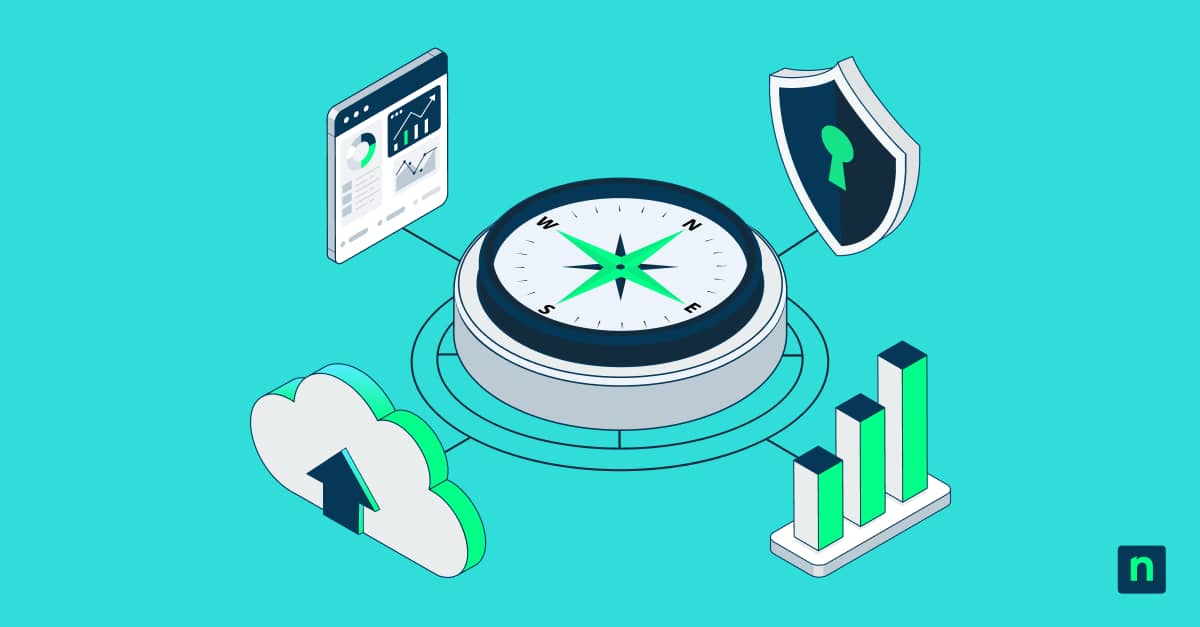Here we are — [update] three months away from Microsoft officially ending support for Windows 7 and Windows Server 2008. The big day is January 14, 2020, and it will be here before we know it.
So, how is migration going? Are the majority of MSPs and their clients ahead of the game, or playing from behind?
What’s at stake when it comes to EOL, anyhow, and how can MSPs maximize this opportunity to secure additional commitments, streamline their operations, and boost their revenue?
To find out, we surveyed MSPs and internal IT admins to understand the latest migration mindsets and challenges. Before we dive into the findings, let’s quickly recap what EOL for Windows 7 and Windows Server 2008 is all about and take a quick look at the distinct opportunities this major event presents to MSPs.
What’s covered in this post:
- What Windows 7 and Server 2008 EOL means for clients
- What it means for MSPs
- Two specific opportunities to take advantage of
- Stats on how migration is going
- Keys to making migration smooth and efficient
What does Windows 7 end of life (EOL) mean for clients?
From January 14, 2020, Microsoft will no longer be supporting Windows 7 with new updates or security patches. That doesn’t mean Windows 7 systems will stop working, of course, but it does mean they will quickly become highly vulnerable to cyber attacks that can put client businesses at risk.
The same goes for Windows Server 2008.
The options for clients include upgrading to newer versions of Windows, or, if upgrading isn’t immediately possible, paying an additional fee in order to continue receiving Extended Security Updates through 2023. The latter option is available to Windows Enterprise or Windows 7 Pro customers only, is priced per device, and will double in cost each year.
Things are a little different when it comes to Extended Security Updates for Windows 2008. All together, this can get confusing, so here’s a chart you can use when talking to clients about their options:
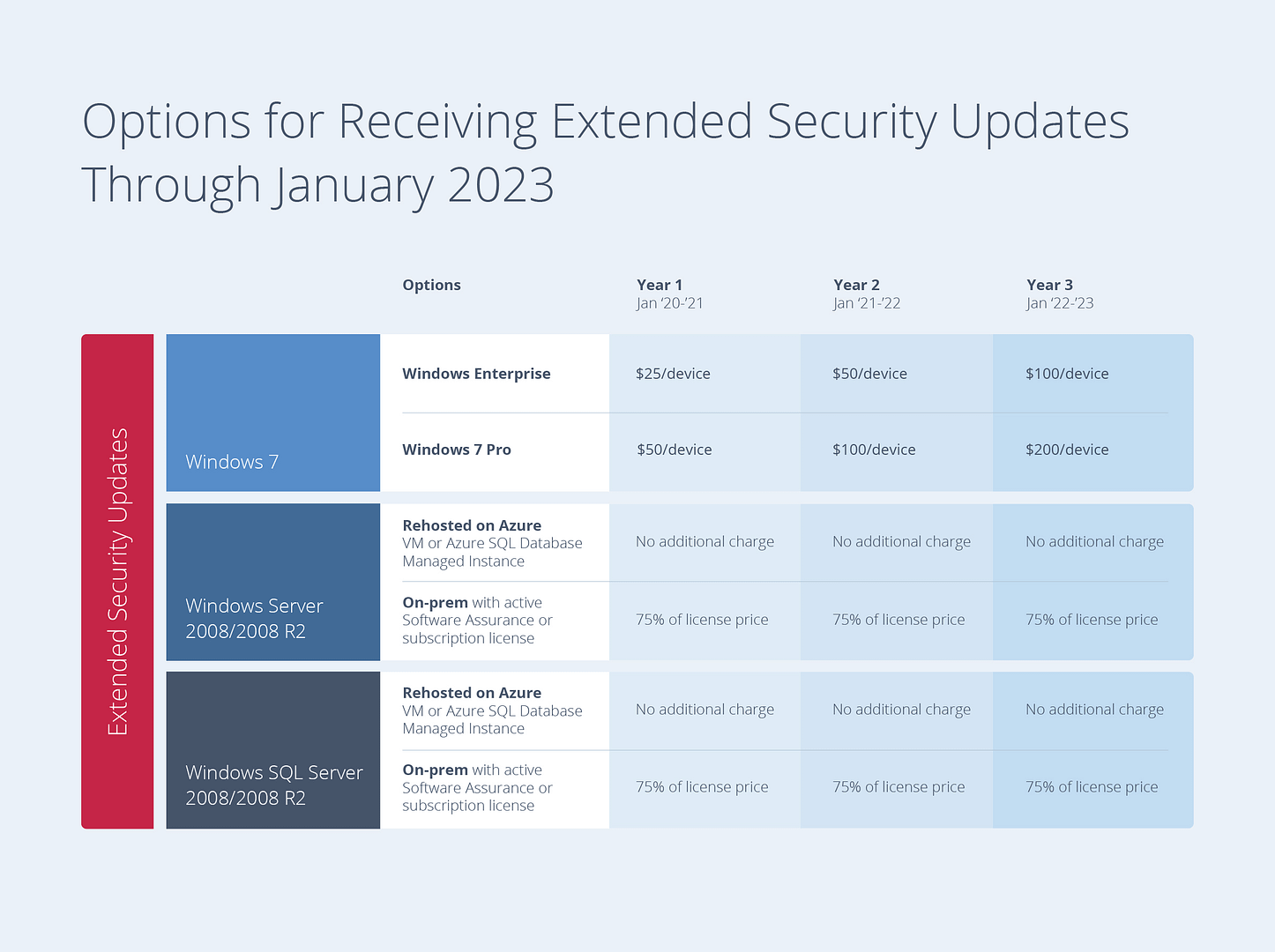
Of course, another big point you’ll want to make clear to clients is that migrating to new systems can also be a good (or necessary) time to upgrade to new machines.
What does Windows 7 EOL mean for MSPs?
The eternal pessimist’s take:
If you’re dealing with situations where upgrading is an uphill struggle — either due to custom/legacy applications presenting compatibility issues or simply due to clients dragging their feet — then the thought of Windows 7 systems going unsupported in January may be giving you hives.
Without security updates, these systems will quickly become major liabilities, and you should make it clear now that any clients that insist on operating them without following your suggestions will be doing so at their own risk.
What exactly does that risk entail, they may ask? Well, according to the Ponemon 2018 State of Cybersecurity in Small & Medium Size Businesses report, the average cost of a cyber attack is nearly $3 million, with $1.56 million of that attributed to downtime and disruption.
Speaking of downtime, Cisco’s 2018 Cybersecurity Report: Special SMB Edition further explains that 40% of SMBs experienced eight or more hours of downtime due to a security breach last year.
In short, the cost of doing nothing now and being forced to recover from an attack far outweighs the cost of upgrading.
The eternal optimist’s take:
On the bright side, Windows 7 and Windows Server 2008 EOL also represents a major opportunity for MSPs to get on new prospects’ radars and solidify your role as a trusted advisor for your existing clients.
Here are two ways you should be taking full advantage of Windows 7 EOL (if you aren’t already)
1) Use education around EOL as your “in” with new prospects
With Microsoft planning to start issuing notification pop-ups for Windows 7 EOL, people are going to have questions. You should make sure you’re out there providing answers, whether that’s through direct outreach or helpful content optimized to show up in search.
Here are three good examples of blog posts MSPs have written that are ranking high in Windows 7 EOL searches, getting prospects onto their sites, and converting them with special additional content offers once they’re there:
- Windows 7 End of Life is Fast Approaching by TCI Technologies
- Is Your Dental Practice Ready for Windows 7 End of Life? by Wheelhouse
- Windows 7 & Server 2008 End of Life: What That Means for Your Practice by Integrityss
2) Use EOL to secure project work AND drive standardization
The other big opportunity this EOL cycle presents is helping existing clients revamp and improve their environments (while streamlining things for you).
Whether it’s migrating to cloud offerings or simply upgrading to newer versions of Windows and newer machines, now’s the chance to steer your clients all in the same direction in order to improve their experience AND better standardize the equipment and environments you have under management.
In other words, leveraging migration to secure additional project work is good, but leveraging it to drive homogeneity is even better. It will make your on-going maintenance and management more efficient and profitable, making you even more money down the line. Standardization for the win.
Windows 7 and Windows Server 2008 Migration Statistics: How Is Your Progress Stacking Up?
With less than 275 days remaining until EOL, migration is clearly still a major work in progress for many MSPs and admins.
In fact, according to our survey, close to 40% of systems under MSP/admin management are still running Windows 7.
Things are only slightly better when it comes to Windows Server 2008, which is still running on nearly a fourth of the average respondent’s servers.
What’s more, respondents estimated that, on average, slightly more than 10% of their systems under management would still be running Windows 7 and/or Windows 2008 after January 14, 2020.
Rather than take their chances, did respondents indicate that they anticipate paying for Windows 7 Extended Security Updates to keep unsupported systems secure?
No, they did not.
What new systems are folks migrating to?
For Windows 7 systems, the overwhelming majority (96%) are migrating to Windows 10. For Windows Server 2008, things are a little more interesting, but it’s still largely straightforward — a clear majority (70%) are or have already migrated to Windows Server 2016.
What are the biggest challenges slowing down migration?
According to our survey, the top two hurdles standing in the way are lack of time/resources and compatibility issues caused by legacy applications.
On a positive note, the majority of respondents indicated lack of priority and resistance from stakeholders weren’t really big issues at all. One contributing factor may be that many respondents were able to get the ball rolling early, initiating migration discussions with clients and stakeholders as early as two years ago or even earlier.
If you’re in that grey or red block, it’s ok. Things may be coming down to the wire, but there’s no need to panic (yet).
How to help clients migrate from Windows 7 to Windows 10 efficiently
There’s really no getting around the fact that migration is a major project that takes planning, time, and budget. So if you haven’t already, you should set the stage with clients now.
Start by using your RMM or asset management tool to identify clients with large numbers of Windows 7 systems deployed. Reach out to these clients and get time on the calendar to talk about migration. Have a clear plan/proposal ready for them to review and approve. It should include scoping for both hardware and software upgrades, particularly if there are custom legacy applications that need to be tested or may not be supported by Windows 10. That means you’ll need to have a comprehensive inventory of your client assets, including warranty status for client machines.
As far as the migration, itself, goes, luckily there is plenty of guidance and tools out there to make the task more manageable.
For starters, there’s Microsoft’s Windows Assessment and Deployment Kit (ADK), which has been updated specifically to assist in automating the Windows 10 deployment process.
You’ll want to roll out in a test environment first, of course. And you’ll also want to be aware of the different Windows 10 releases. Windows 10 version 1903 is expected to roll out at the end of May, but unless you like to live on the edge, last fall’s version 1809 is the safer, vetted bet.
Bottom line
Migration from Windows 7 and Windows Sever 2008 is a major project, and for MSPs, opportunities like this don’t come around every year. Make sure you’re taking full advantage by guiding your clients through the process and doing so on your terms as much as possible.
Speaking of EOL, is it time to move on from your overly complicated RMM?
The right tools should save you time, not create more work for you. But if you’re like many MSPs, your RMM is actually forcing you to spend more time working in your business rather than freeing you up to work on growing it.
If you’re tired of overcomplexity and long training requirements and want a powerful tool that just works NinjaOne is your answer. See for yourself. Start your free trial today.



